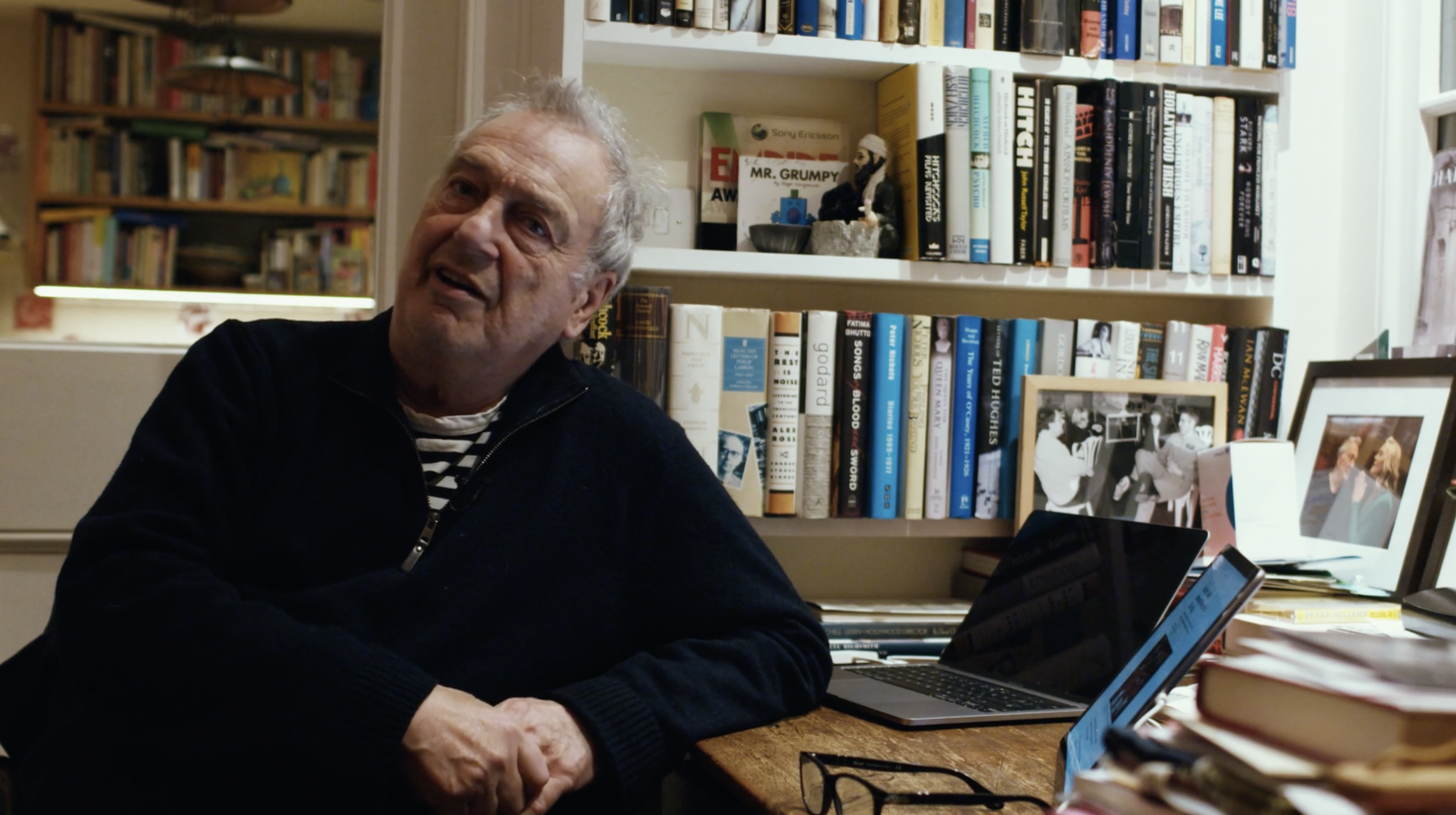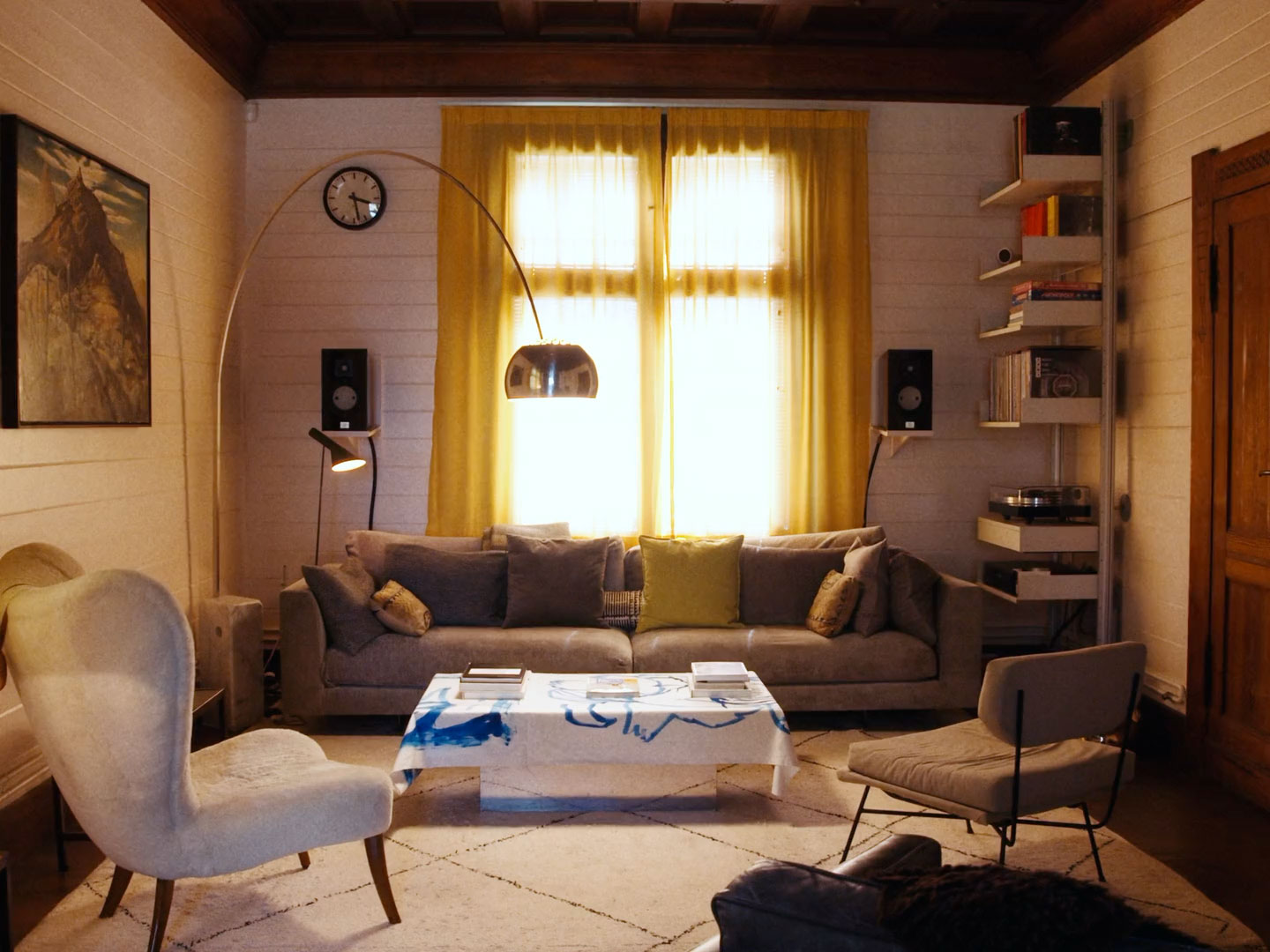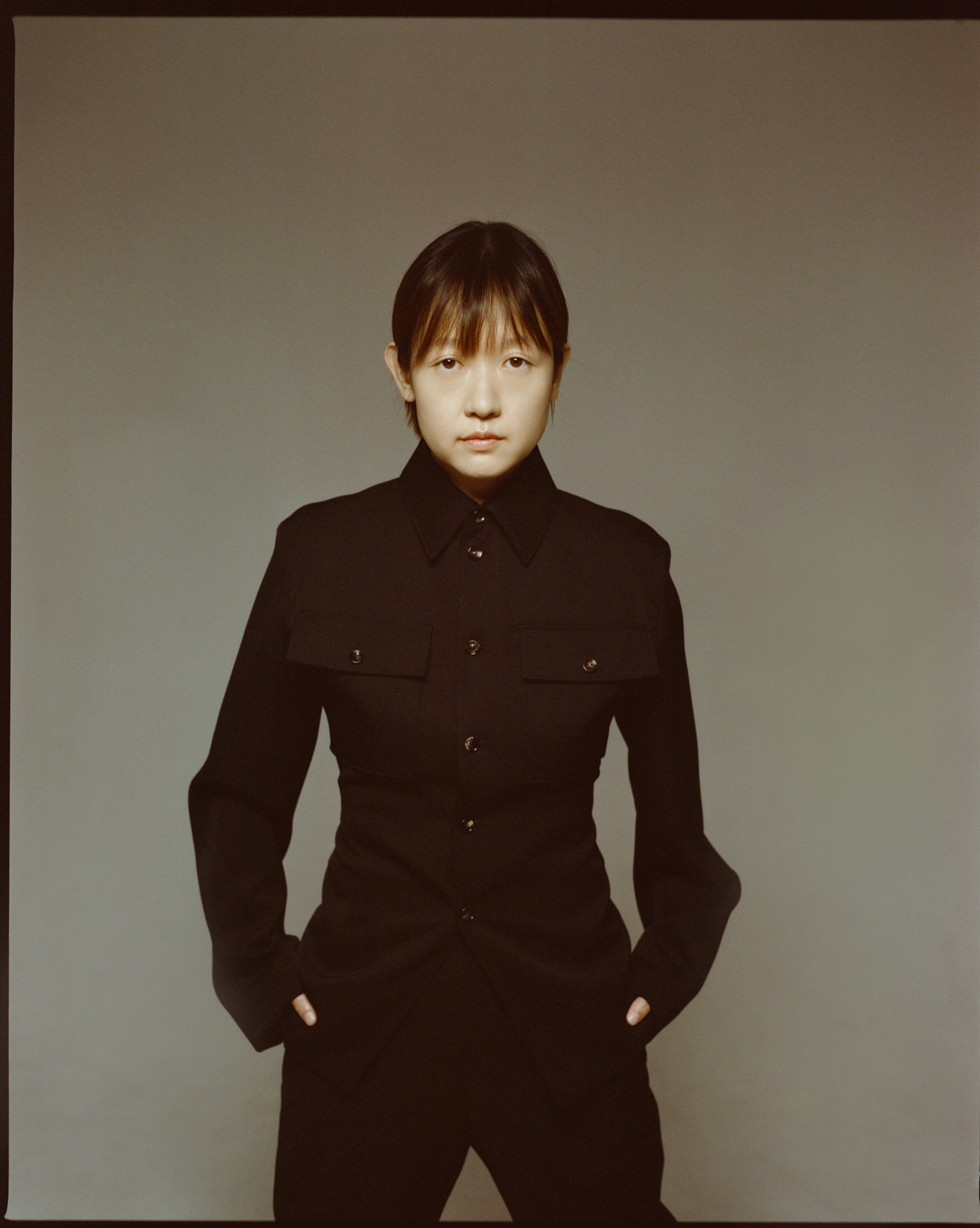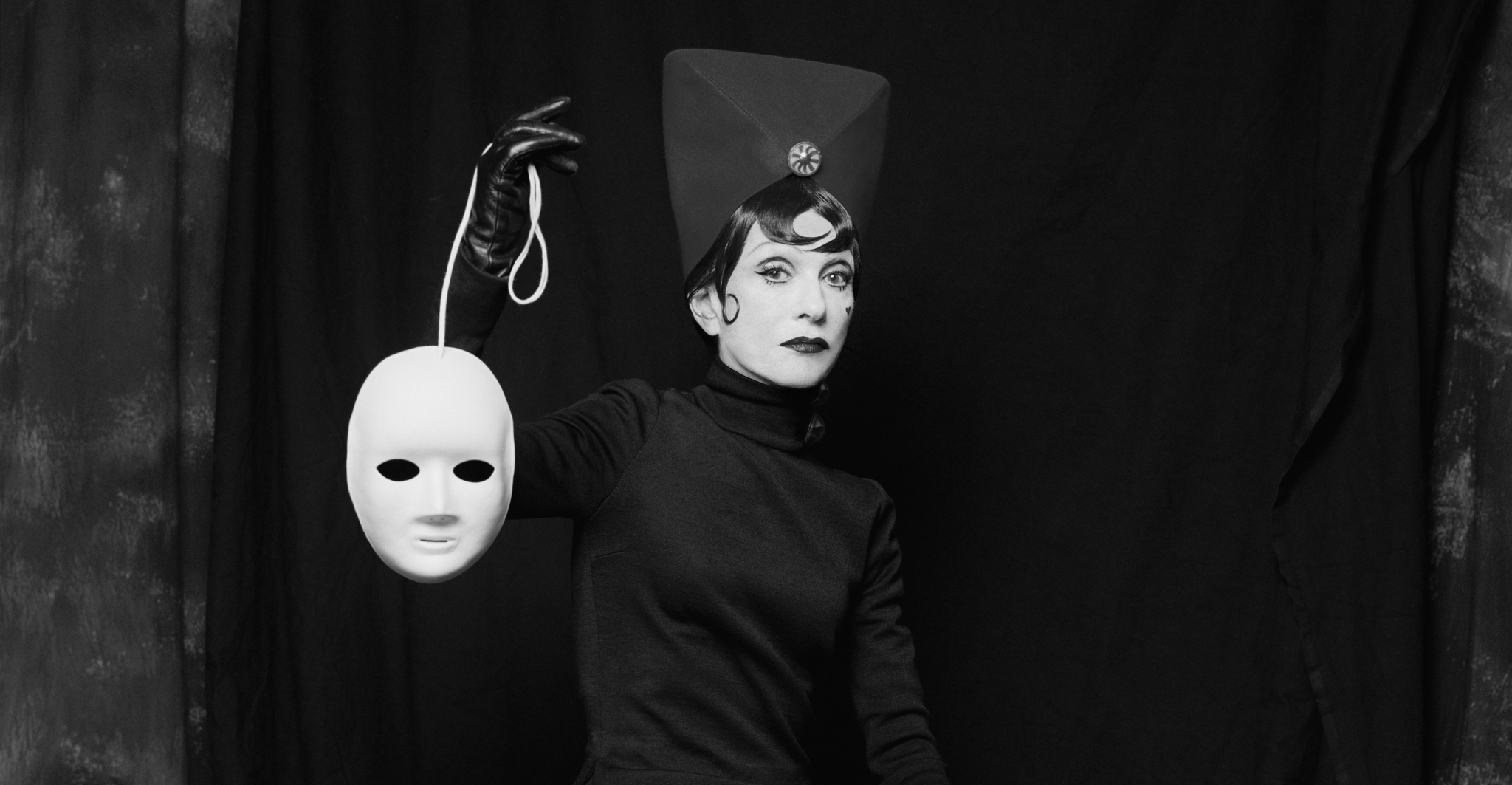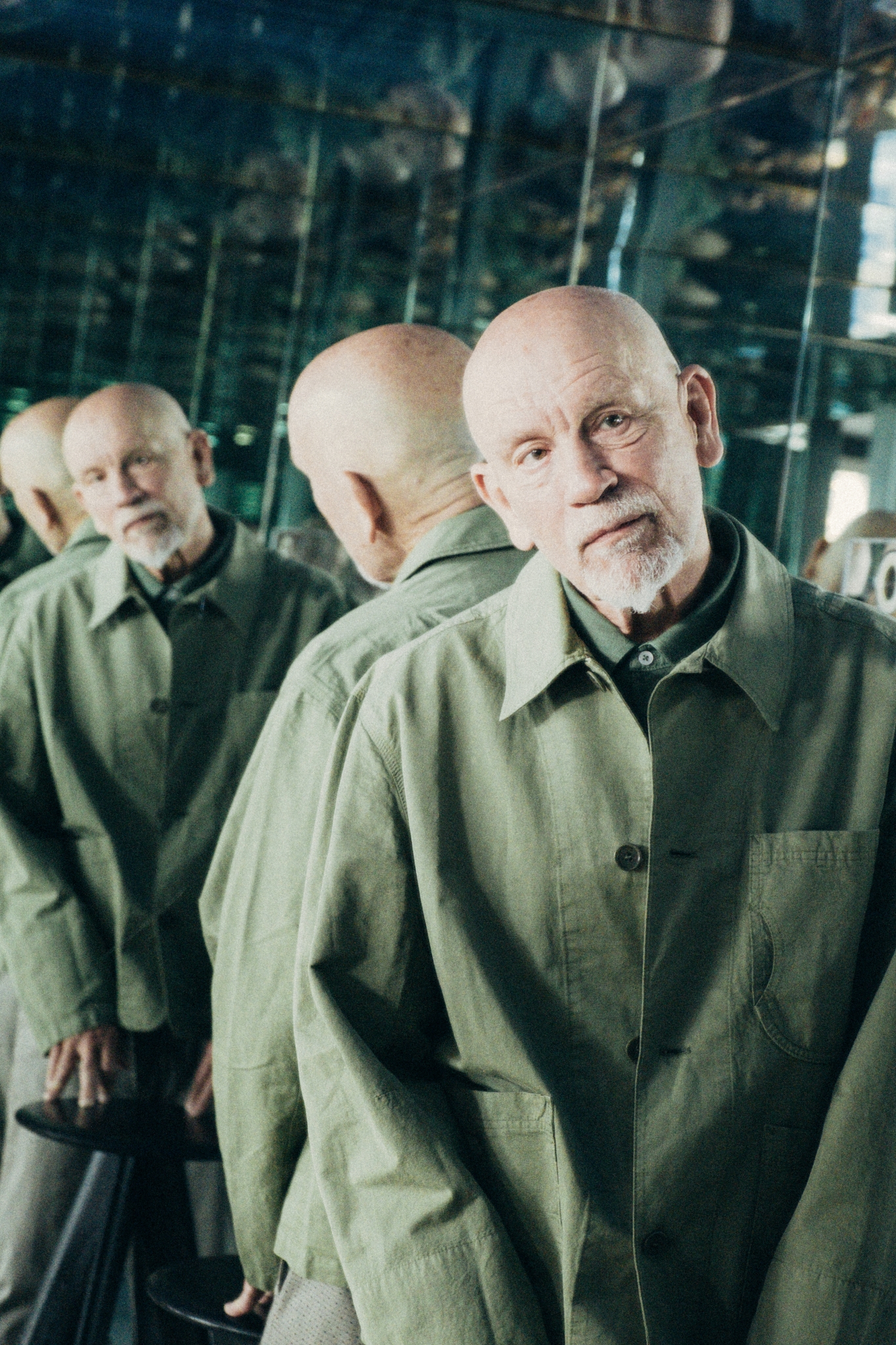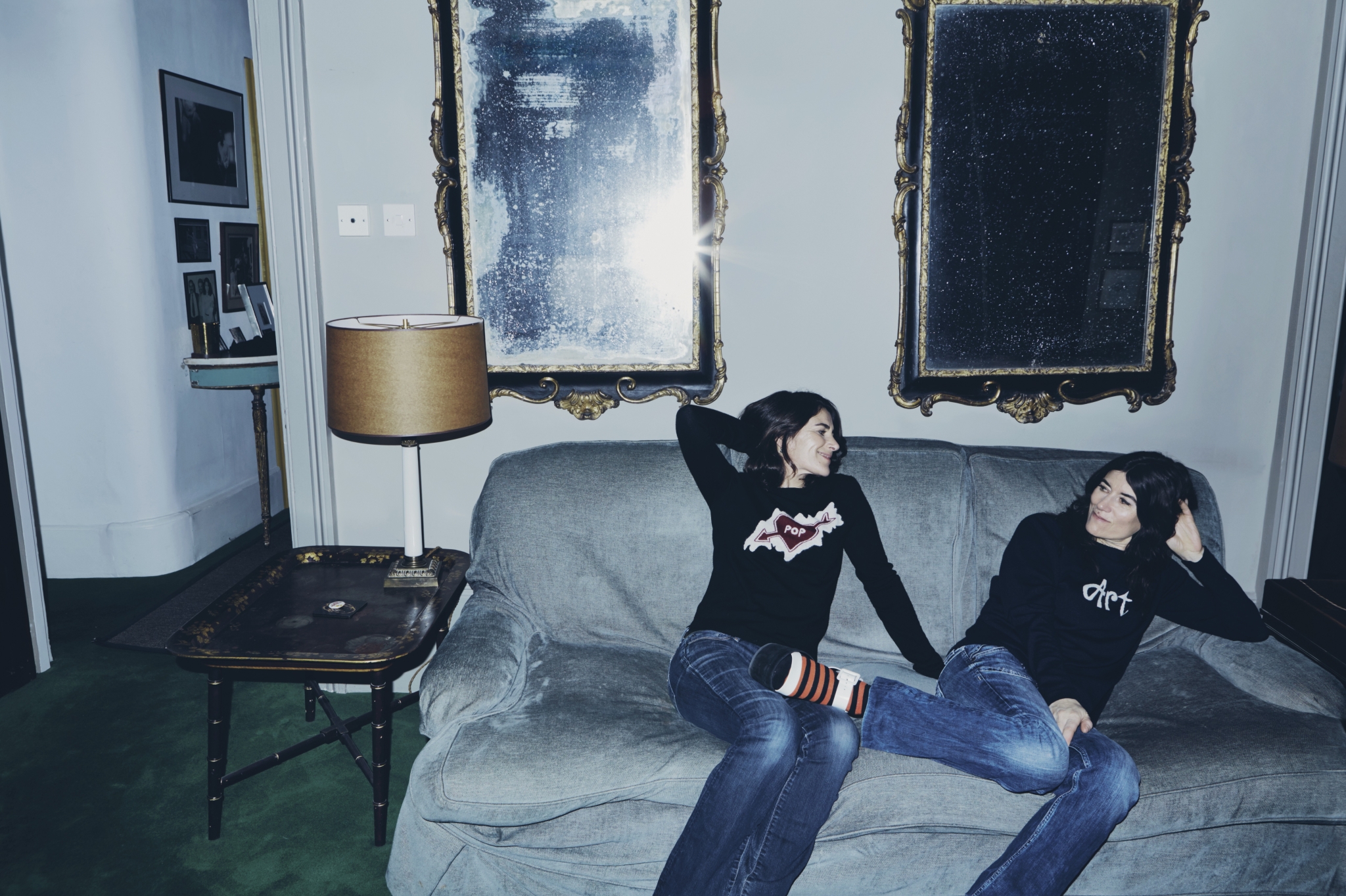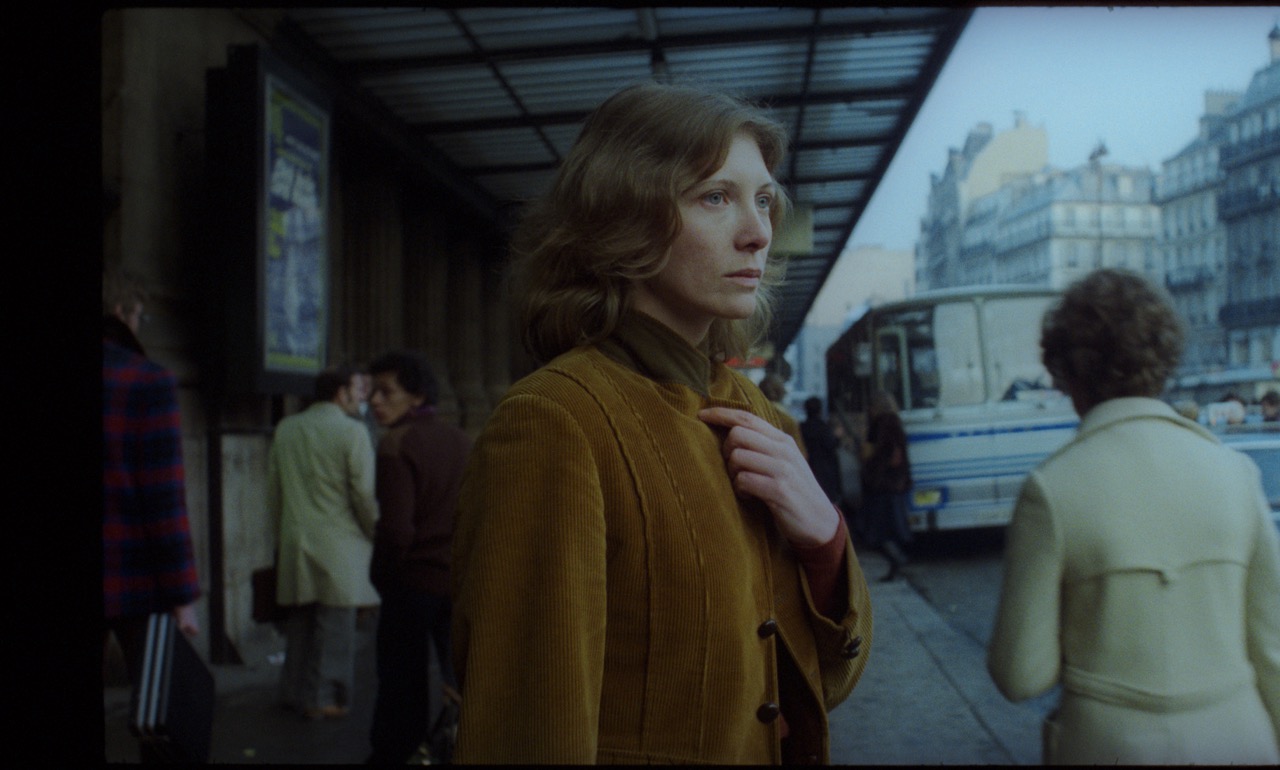

As a new season of her work begins in London, Cici Peng explores the spatial metaphors—of longing and loneliness—in two of Chantal Akerman’s films.
Chantal Akerman’s cinema is one interested in oppositions: in the non-spaces where people come and go, set against the entrapment of the female domestic sphere. A cinema of hotels as well as kitchens. Akerman spent her life moving across various cities: New York, Paris, Brussels, shooting documentaries across borders in Poland, Ukraine and Mexico. Itinerance classifies much of her work and her identity as an exile as well as a daughter of Jewish Holocaust survivors.
For this reason, I’m particularly interested in two works by Akerman: Hôtel Monterey (1972), the filmmaker’s silent feature and Les Rendez-Vous d’Anna (1978)—her fourth feature film, both which are situated within hotels. However, rather than Akerman’s nomadism offering any sense of weightlessness and freedom, Akerman’s non-places are haunted by the inescapable history of the past. Sometimes it’s the inescapability of one’s own family: in Les Rendez-Vous d’Anna and News From Home (1976), the letters of the mother always arrive. I’m particularly interested in the way Akerman’s psycho-geographical landscapes are caught in a double bind between exile and entrapment, spaces of escape are constantly invaded by the angel of history.
In commercial cinema, the camera is inordinately focused on characters, with space becoming secondary to their movements. Akerman’s compositions, on the other hand, sharp and angular, are filmed in perimeters—as frames within frames—whether that’s the vertical framing of a corridor, phone booth, or double-framed windows, there is always an edge. Characters often walk into a shot already framed. Even in her short film Hanging Out Yonkers (1973), filmed in a youth rehabilitation centre in New York, the frame of the pool table organizes space and delineates movement. With her first films La Chambre (1972) and Hôtel Monterey, space itself becomes the subject, with the camera embodying a character.
Filmed over one night, and one morning, over approximately 15 hours, in a rundown Manhattan hotel from night to day, Hôtel Monterey is Akerman’s 65-minute debut feature examining space and duration in collaboration with cinematographer Babette Mangolte. Akerman explained in an interview, “I want people to lose themselves in the frame, and at the same time to be truly confronting the space.” Starting from the lobby and the ground floor, Akerman’s wide-angle camera slowly ascends with the elevator, to the corridors, peering into the rooms, before finally venturing onto the roof in the morning, capturing the Hudson river. Akerman’s vision of New York begins with an inversion, starting from within the hotel—a film that almost operates in reverse to her city symphony News from Home.
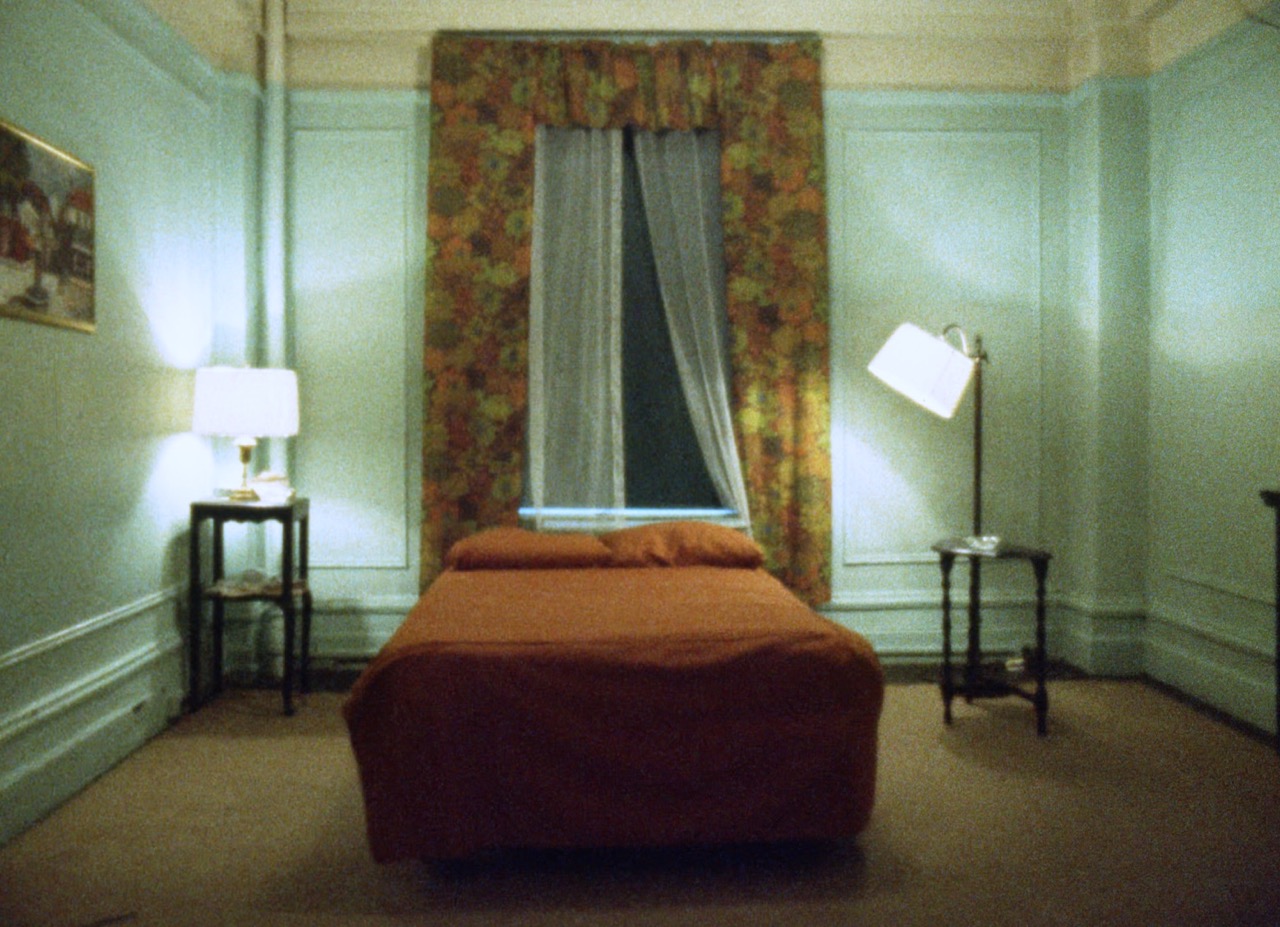

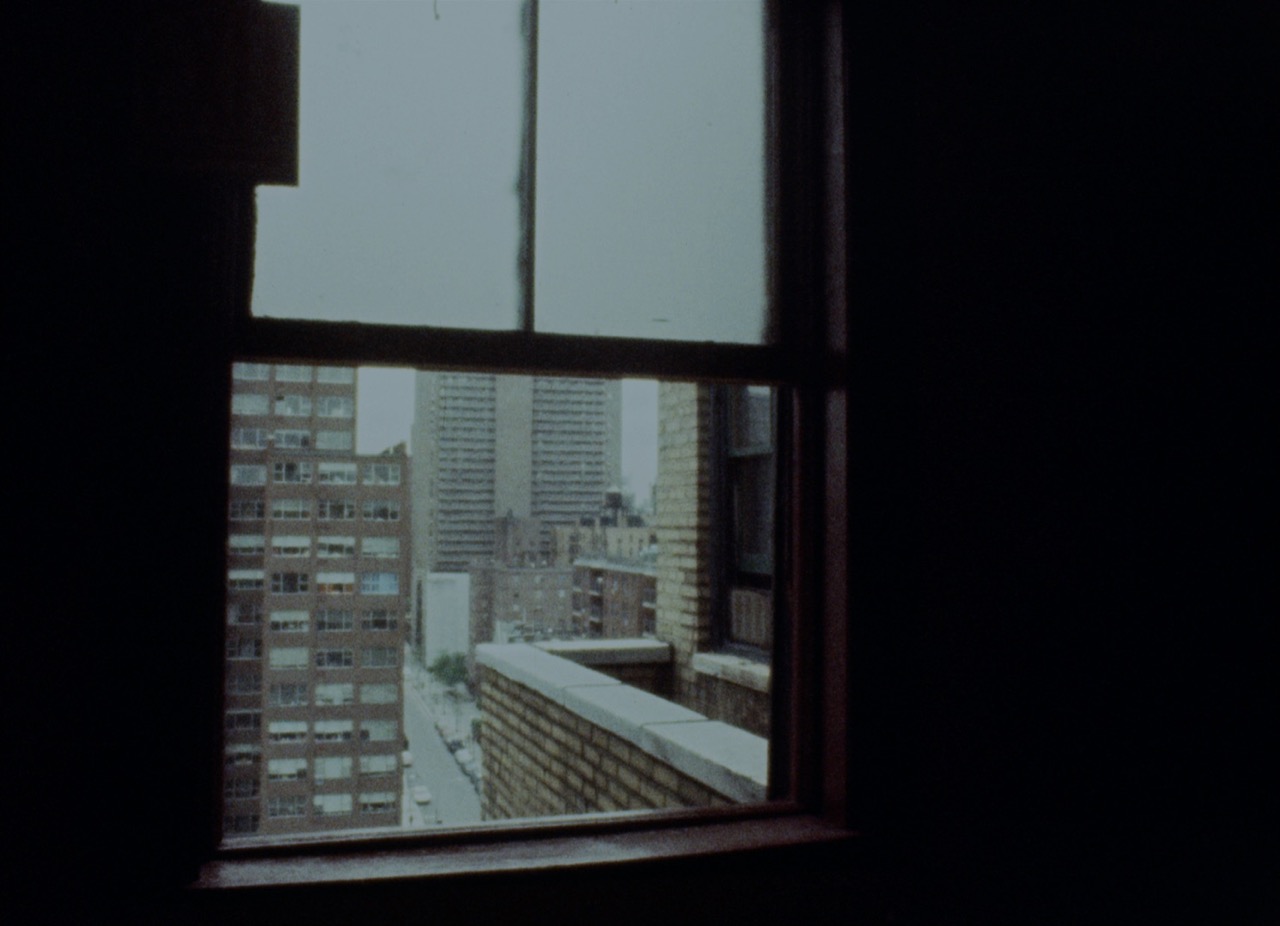
Hôtel Monterey demonstrates Akerman’s characteristic concern for symmetry set against extended, observatory long shots. In Darren Hughes’s brilliant formal examination of Akerman’s Les Rendez-Vous D’Anna for MUBI Notebook, he playfully suggests that the central character, Anna, is a vampire, one who we only see at night, in hotels, never in other people’s homes. I’d respond with my own theory: if Anna is a vampire, then Akerman as the camera is a ghost in Hôtel Monterey. The first two shots begin with a mirror-image, one that captures the hotel inhabitants in their watery absent-presence. The camera often lingers in corners, at the end of a corridor, or edge of an elevator, leering in. The camera captures straight lines and frames, calling to mind Chinese mythologies that ghosts can only move in straight lines. Of course, this is a theory full of holes, but it exemplifies Akerman’s interest in the emotions and tactile presence of emptiness.
Initially, the film seems composed of the rhythms of the comings-and-goings of the hotel guests who frequently wander across the frame, or who wander in and out of the elevator. However, in the second half of the film, Akerman seems more concerned with the almost paradoxical confinement of such a space—Russian-doll-like door frames within frames, which always reveal a door, an elevator, a wall at the end of the corridor. Something strange starts happening just over 30 minutes into the film: a long shot of the elevator reveals the doors opening empty, followed by a close-up shot of the double elevator doors opening to a sudden gaggle of people walking out at an inhumanly quick pace. Suddenly, your perspective is turned on its head – you wonder, have all the previous still images actually been sped up at a faster film rate within Akerman’s film? What is our perception of time with such possible manipulations? After the elevator sequence, the camera starts moving for the first time after almost forty minutes of stasis, in slow tracking shots, inching vertically down the corridor to glimpse out at night-time windows, until daylight comes. Just from the movement of Akerman’s camera, it feels that we are no longer in the realm of the purely human, and are struck by an encounter with a ghost, whose point-of-view we inhabit.
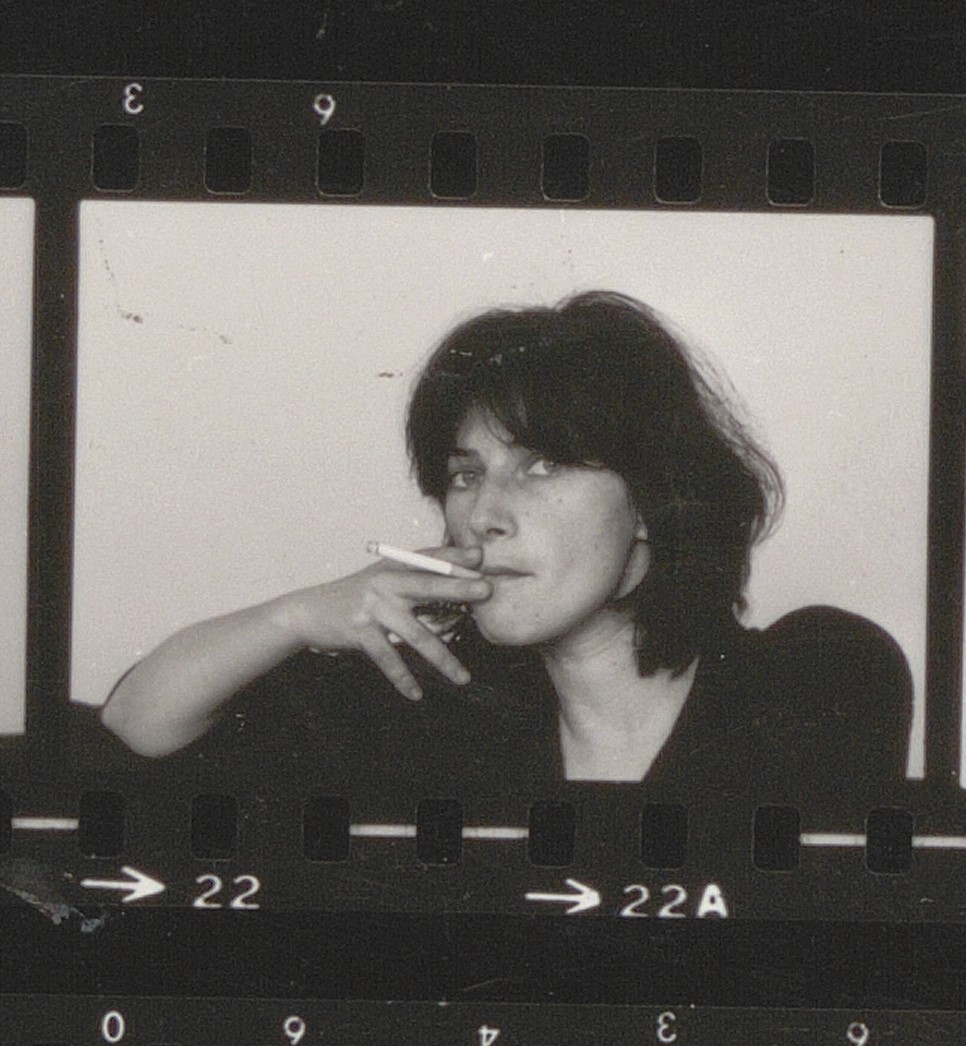
Chantal Akerman. Collections CINEMATEK Fondation Chantal Akerman – © Micheline Pelletier_Gamma
By the second half of the film, we realize that the inhabitants of these rooms are not temporary voyageurs, but are inhabitants with nowhere else to turn to. Long shots capture messy rooms, cluttered with the histories of its inhabitants, a shoe, an empty water bottle. Each hotel room loses its tabula rasa quality as soon as it’s inhabited, possessing another history. In an interview, Akerman delineates such a sense of paradoxical entrapments of hotel rooms. She says, “the room is a protection, but it’s also a jail. And as a child of the second generation—which means that my mother was in the camps—I perpetuate the jail thing. I would always put myself in jail, but I always have a little doorway that I break, and then I make movies!”
Like Akerman’s New York films, Les Rendez-Vous D’Anna similarly deals with estrangement, exile and confinement, only this time it is expressed not through the absence of a character, but the emphasis on the opaque protagonist, Anna Silver (Aurora Clement). Anna is a filmmaker on the road touring her films from West Germany to France, a stand-in for Akerman, perhaps. Unlike Hôtel Monterey, Akerman does not linger in any of the shots of the empty hotel rooms: she cuts as soon as Anna leaves, and the only history we learn of the other inhabitants are through leftover objects—a forgotten tie in the closet, Anna taking a nibble from someone’s room service left outside their door, besides their shoes. The film’s plot is minimal. Anna has fleeting encounters with people during her travel: a one-night and a day stand with a German man; a friend of her mother’s; her mother; a stranger on a train, and finally, a frequent lover in Paris, whom she spends a night with before returning to her own apartment, which is empty and dark, with little indications of life. However, Anna continues to return to the phone, attempting to call Italy, seeking out a female lover who she cannot seem to forget.
Akerman’s formal composition, full of angular symmetry and rigid precision, belies an emotional distance. Each shot keeps Anna caught between stillness and motion, exemplifying the impossibilities of escaping oneself. Akerman employs multiple tracking horizontal dolly shots of Anna walking down hotel corridors (the French word for tracking shot is travelling), yet, with the camera and Anna’s body moving together, she appears trapped within the centre of the frame. To me, Akerman was one of the first filmmakers to reveal the drama residing in the minimal movements of a camera—what a shock, what a sight!
Akerman is selective in which spaces the audience is privy to. When Anna is framed taking a call in a phone booth during a transit in Cologne train station, despite the camera’s distance outside, we inhabit the same interior sonic space as Anna, hearing her phone dial beeps. However, when she first encounters her mother at the train station in a long shot, we hear the click of their heels approaching one another, yet we cannot hear their conversation. The moment is pure gesture,hands and bodies lingering in a familiar affection between a mother and daughter. What do such plays with subjectivity reveal and obstruct, how does Akerman play with forms of denial and opacity, rejecting the audience’s attempts to box in her characters, and thus her films?
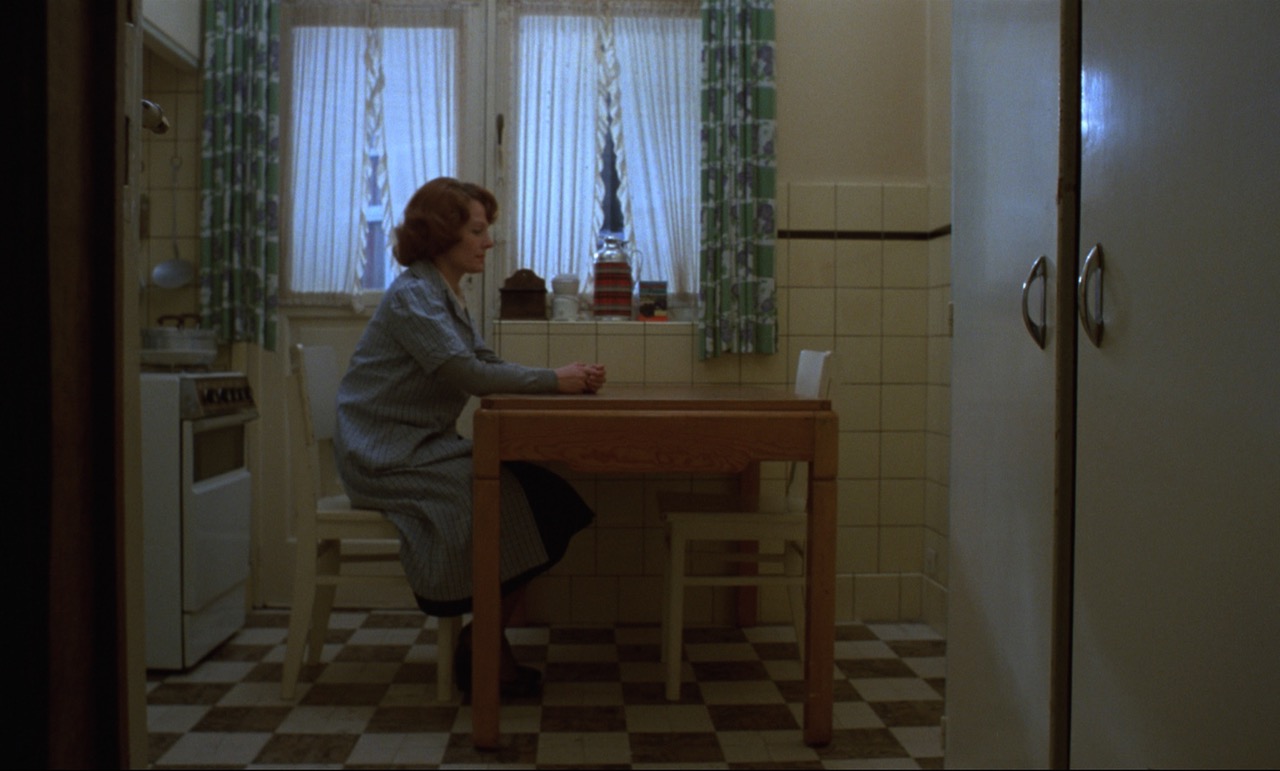
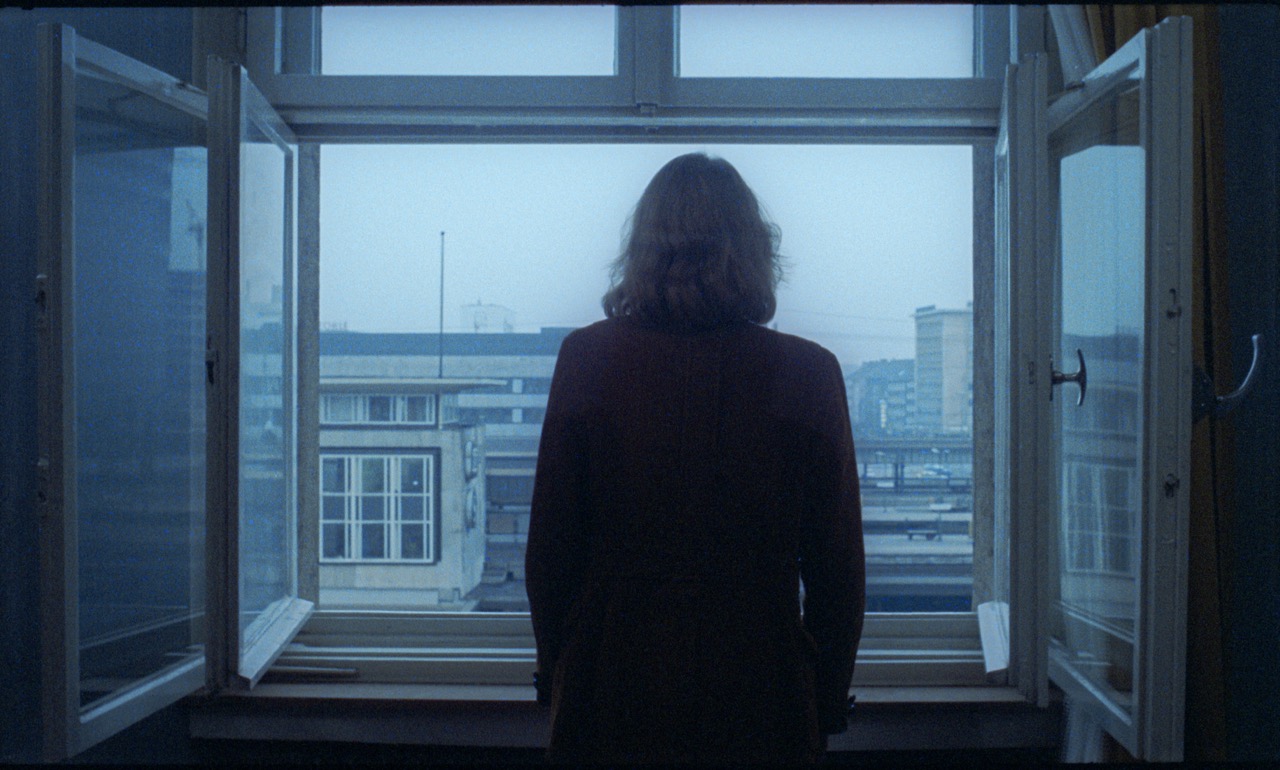
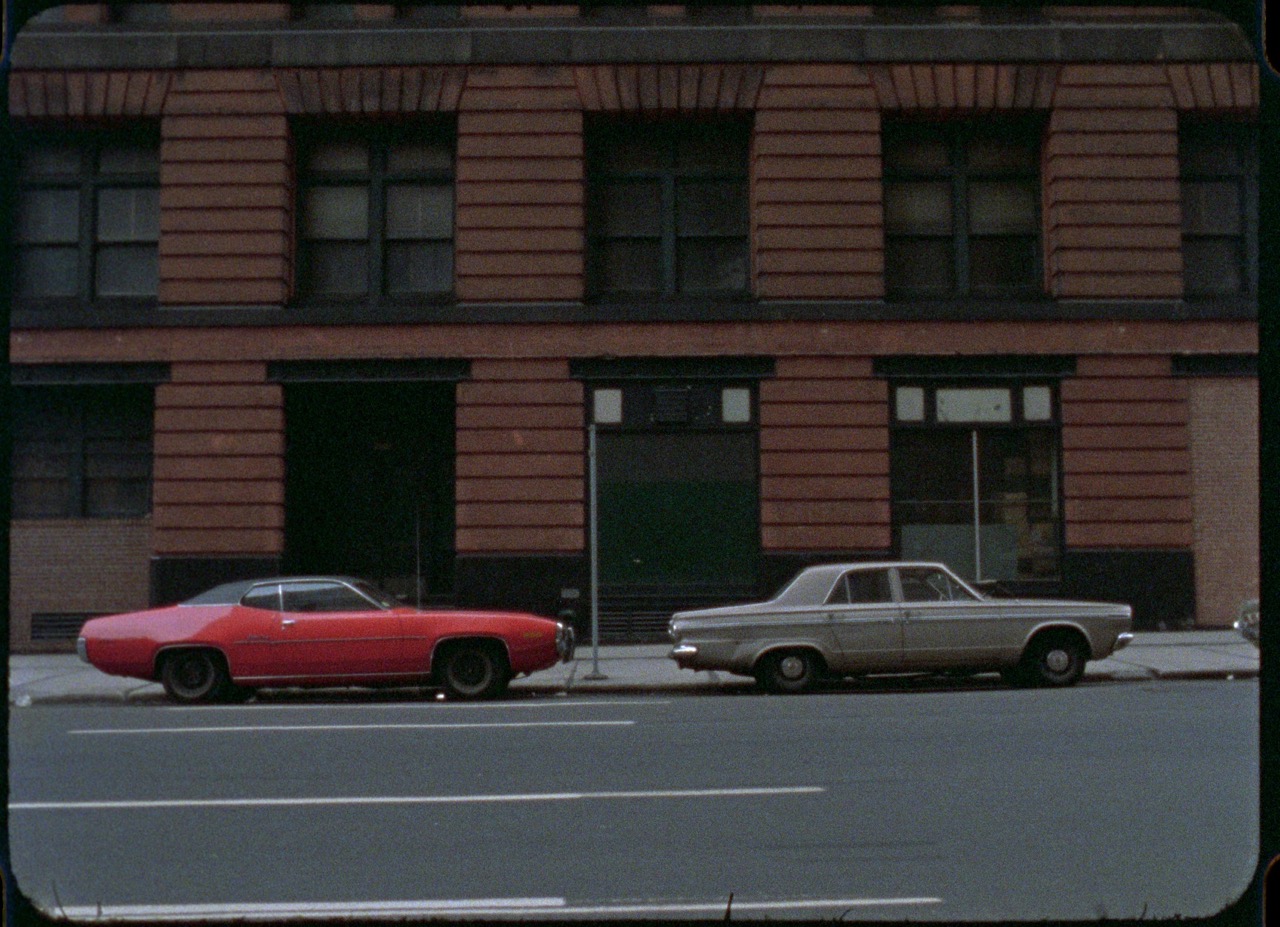
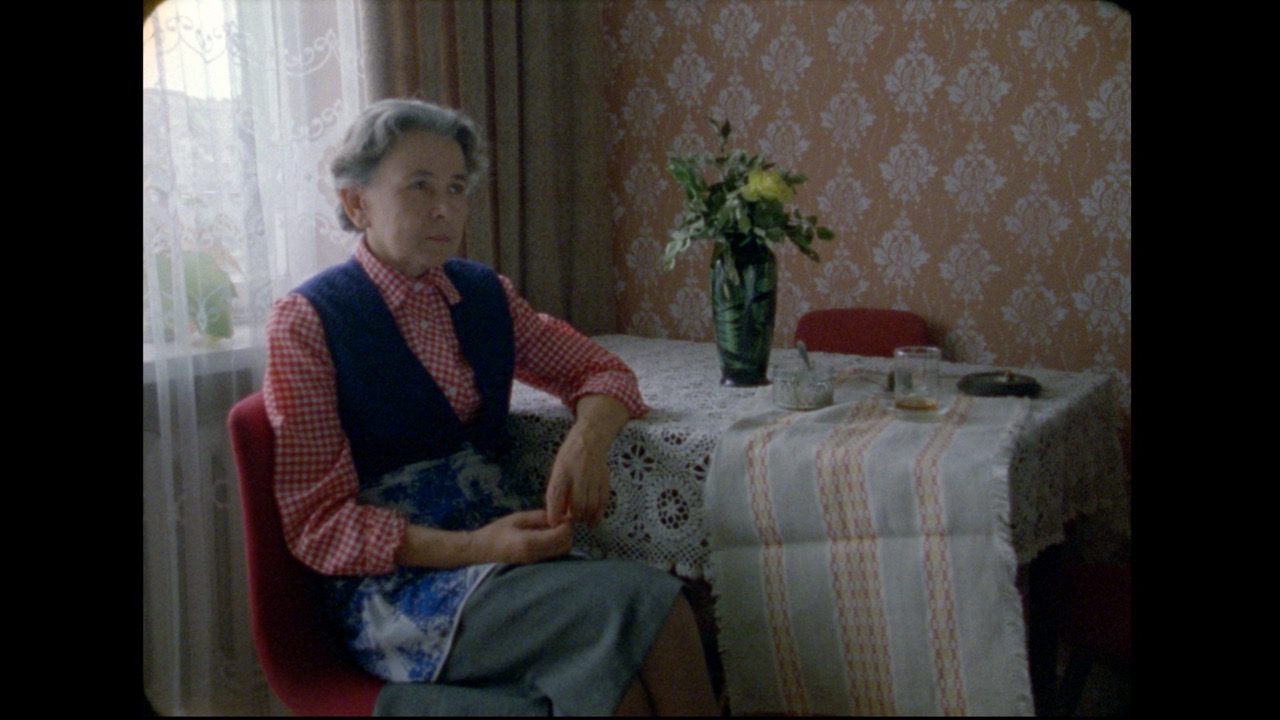
Throughout Anna’s fleeting encounters with others, Akerman plays with the fantasies of the romantic genre. A stranger lights Anna’s cigarette on the train, a metaphor for the buds of a romantic encounter; Anna expresses to her first romantic encounter: “I used to think that when someone held my hand, it meant ‘I love you’. So, I give them my hand and all the rest.” Such are the concerns of the film, a tension between the well-worn dance of a romantic dalliance, of bodies touching, yet rather than feed any sense of romantic glee, they only further push a sense of distance and alienation.
What’s particularly striking is how Anna’s loneliness feels symptomatic of a rejection of the fantasies of her male lovers, or comically, even their mothers, and their desire for order within the tenuous post-War nuclear family idealism. By speaking in monologue, all the men in the film project their desires onto Anna, who remains observant and passive, except to occasionally express her rejection of their imaginations—she says she hates the suburbs when Heinrich, the German lover, introduces her to his home and his daughter.Anna listens patiently as her mother’s friend recounts the virtues of marriage: “Being alone is not living, above all for a woman”. The only moment we hear Anna’s own monologue is in the dark, where she lies naked in bed with her mother in a hotel room in Brussels. She speaks of her romantic encounter with a woman and their intimacy.
By the end of the film, Anna returns to her apartment, lying prostrate in bed, listening to each of her voicemails stoically. Anna’s sense of dissociation and self-mandated exile feels distinctly part of the sensibilities of postmodern malaise, one that rejects the traditional frameworks of marriage, heterosexual intimacy and prescriptions for happiness. A queer artist who is not so easily definable, she rejects the fantasies thrust on her. Akerman’s film is a brilliant precursor to more recent films that deal with young modern malaise, from films by Tsai Ming-liang to the more recently The Cloud in her Room (2020) by Zheng Lu Xinyuan. As she lies in bed, we hear her last voicemail ring with a female voice probing, ‘Where are you Anna?’ Anna’s presence feels as untethered to any space as to the sonic netherlands of her voicemail.
Chantal Akerman: Adventures in Perception is on at the BFI London until 20th March 2025

